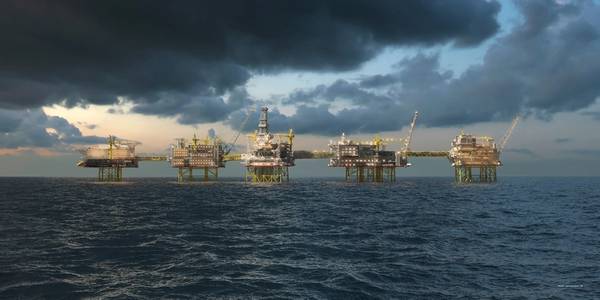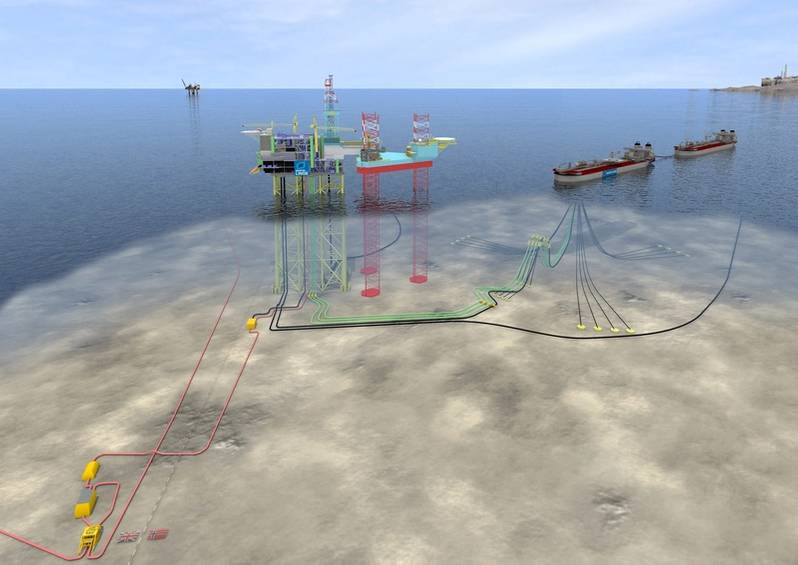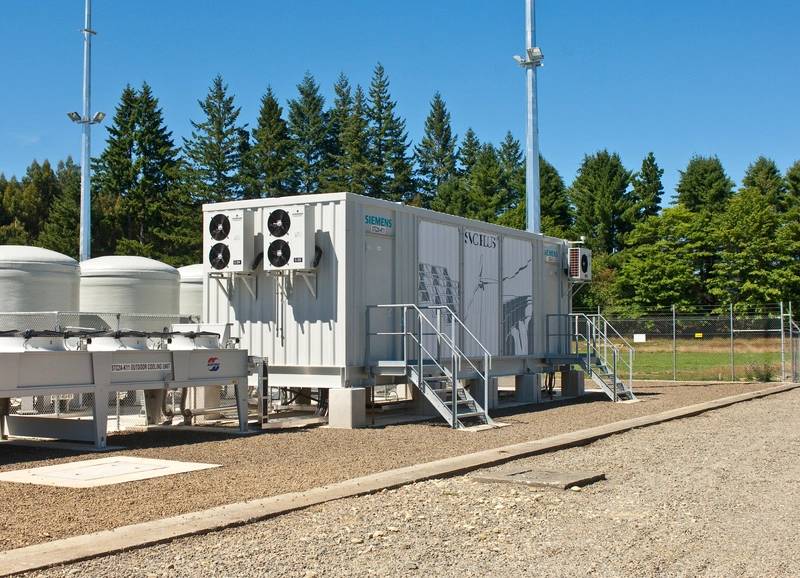
Offshore oil and gas production is very energy intensive, and with declining field pressure and the need for enhanced production the energy demand even increases substantially in the later lifetime of an oil and gas production facility. The energy demand comes to a high degree to drive compressors and pumps and the power demand of a single platform can easily exceed 100 megawatts (MW). Traditionally, larger compressors are driven from mechanical drive turbines and there is power generation with small or medium gas turbines on a production facility as well. With increasing energy demand and growing awareness of the economic impact of the fuel gas value the oil and gas industry is challenged to reduce its carbon footprint and to move towards a better energy efficiency and electrification. One way is to use electrical energy generated by highly efficient combined cycle power plants or even by renewable sources and transmit it from onshore to the offshore production facilities. All the compressors and pumps would then be driven from electric motors.
In order to meet the electrical power requirements for offshore oil and gas structures there is now a move using shore-based generation and transport the electrical energy from shore through subsea cables.
Traditional approach
An oil and gas platform is a massive consumer of power for its exploration and production activities. Just about every process on an offshore installation requires power and traditionally these facilities have been serviced by on-platform power generation, using small or mid-size gas turbines for power generation and mechanical drive. Associated gas from the production is typically available to be used as fuel gas for the turbines. In some cases a pre-processing of the gas might be required.
Energy efficiency and reliability of these turbines cannot match that of motors with an onshore grid backed power generation. Offshore gas turbines are specified to meet peak demand needs and therefore typically run in part load conditions with a low fuel efficiency.
In the oil and gas sector and especially in the offshore environment, safety is the primary concern of operators. Having a working power plant with its gas turbines in operation on a rig or floating structure is a safety concern.
Generating the power on the platform requires additional personnel and expertise to accommodate in an already space-constrained environment. Another important consideration is the high operating cost of rig sited gas turbines, particularly when it comes to maintenance. This can often involve costly logistics of air-lifting trained personnel and parts onto the platform.
Another option
Alternatively, to generate the power on the production platform with turbines oil and gas operators are looking to power their operations from shoreside generation. The benefits are myriad. For new facilities, there will be a reduced footprint as there will be no need for the turbines, ancillary systems or space for workers to operate and service them. Total costs of ownership will be reduced. Although there are costs of connecting the platform to shore, this is offset by lower operating cost and greater efficiency of shore-based generation. However, it should be noted that the upfront capital cost for generation with gas turbines is often lower than delivering power from shore, except in the case of short alternating current (AC) connection.
If the power connection is part of the national power grid, there is a very high security of supply and reliability. Power from shore is a eco-friendly solution that provides many advantages one of which is the significantly higher energy efficiency of onshore power generation or renewables results in a minimized carbon footprint. To reduce the high emissions from offshore oil and gas production (e.g. circa 60% of Norwegian CO2 footprint) is the reason behind the idea to give oil and gas platforms access to zero-emission onshore electricity. In Norway, about 99% of electricity is renewable – either hydro or wind energy. Electrification would thus constitute a significant cut in emissions.
 (Image: Siemens)
(Image: Siemens)
AC or DC
Traditionally the main criteria for deciding whether to supply power to offshore platforms using AC or direct current (DC) technology was the distance. AC cables are a proven technology, but their drawbacks increase with the length of the cable. AC cables form distributed capacitance that increases with the length of the cable. In an AC system, this capacitance generates reactive power that will need compensation, e.g. by shunt reactors or a Static VAR Compensator (SVC). If the cable is very long, eventually the generated reactive current will equal the rated current of the cable, and at that point, no rating is left to provide active current.
DC cables do not suffer from this challenge presented by long-distance AC cables. High voltage direct current (HVDC) systems are designed to transmit large amounts of power over long cable runs. One drawback with a DC system is that it will require an AC-DC converter onshore and a DC-AC converter on the platform which increases cost. Depending on the cable distance and power level this is partly or even fully offset by the cost of the cables. DC systems only require two cables as opposed to a number of three-core or a multiple of three single-core cables for AC systems.
AC power from shore solutions have been used for platforms such as Martin Linge, Goliath, and Ula. However, DC is rapidly becoming the alternative option and will be used on the Johan Sverdrup field for example.
Offshore power in action
The North Sea Martin Linge field is an oil and gas discovery made in 1978. The field is located 42 kilometers west of Oseberg in the Norwegian North Sea. Equinor became the operator of the Martin Linge field in March 2018. The field comprises a jacket-based integrated wellhead, production and accommodation platform and a permanently anchored oil storage vessel. When the field comes on stream, the gas will be transported through a new pipeline connecting the field to the existing pipeline going to St. Fergus, Scotland. The oil will be processed on the storage vessel and transported from the field in shuttle tankers.
The Martin Linge platform receives shore power via the world’s longest AC sea cable measuring 162 kilometers from the onshore substation at Kollsnes, north of Bergen, to the platform. According to Equinor the use of shore power will reduce CO2 emissions by 200,000 metric tons per year, corresponding to emissions from 100,000 cars. The platform was connected to shore power in December 2018.
The challenge for the platform was to comply with Norway‘s efforts to fulfill CO2 emission reduction obligations in accordance with the Kyoto Protocol. To this end, the operator decided to use power from the shore, despite the long distance. To increase AC grid reliability and reduce power delivery costs, Siemens used its FACTS (Flexible AC Transmission System) SVC PLUS technology (2x SVC PLUS container solutions, each ± 50 megavolt ampere reactive to handle the above-average demand for reactive power compensation. The customized turnkey solution consists of nine bays of 100-kilovolts gas-insulated switchgears and two 80-megavolt amperes transformers.
It is not only fixed platforms that require power. The Goliat field is an offshore oil field in the Norwegian sector of the Barents Sea. It is located 85 kilometers northwest of Hammerfest. The Goliat floating production, storage and offloading (FPSO) unit is supplied with AC power from shore with a 106-kilometer-long cable. The result in this instance is a 50% reduction in CO2 emissions. At the core of this solution: the SVC PLUS reactive power compensation system and voltage-sourced converter technology (VSC) by Siemens.
 (Photo: Siemens)
(Photo: Siemens)
DC from the start
For Equinor’s giant Johan Sverdrup field the decision was made to utilize DC power from shore. The field holds an estimated 3.2 billion barrels and is expected to produce for more than 50 years. Given the size of the venture, efficiency is crucial as is ensuring that it has a low carbon footprint. Power from shore to Johan Sverdrup will help reduce emissions by an estimated 460,000 metric tons of CO2 per year, equivalent to the emissions of 230,000 private cars each year.
In phase 1 of the development, the power-from-shore solution has a capacity of 100 MW, based on a production capacity of up to 440,000 barrels per day.
In Johan Sverdrup phase 2, with start-up expected in the fourth quarter of 2022, the power from shore capacity will be expanded with 200 MW, giving a total capacity of 300 MW, for this Siemens will supply its compact power VSC system that is designed for small power and long-distance connections for oil and gas platforms. The system is modular with a HVDC link in symmetrical monopolar topology. The HVDC equipment provided by Siemens consist of two converter stations, onshore at Haugsneset close to Kårstø and offshore at the Johan Sverdrup field center. First, at Haugsneset, the electric current is converted from AC to DC, enabling the transmission of electricity for 200 km offshore, while minimizing power losses. Then, offshore, the electric current is converted back to AC needed to run the field center equipment. After the start-up of the second phase of the development in 2022, the Johan Sverdrup field will also enable power from shore to reach the adjacent fields – Edvard Grieg, Gina Krog and Ivar Aasen. The expanded power capacity will also be needed for the added Johan Sverdrup production capacity of 220,000 barrels per day, and the total full field production capacity of 660,000 barrels daily.
Using DC power from shore is a different operational model for the oil and gas industry. The technology is now mature, and the industry is beginning to see its advantages so over the coming decades it looks set to become the offshore power solution of choice for longer distances or where a frequency conversion is necessary.